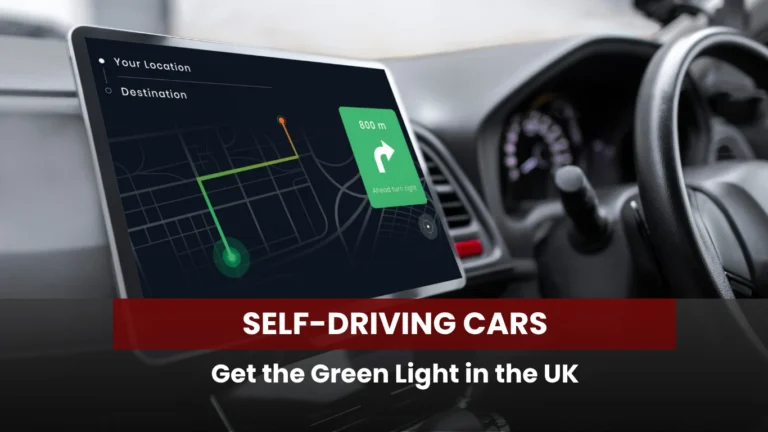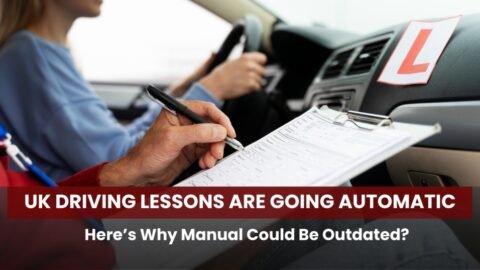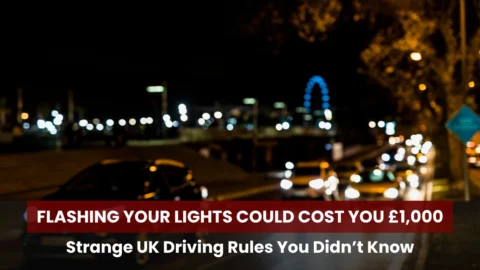You’ll know the feeling if you’ve ever traveled in a car that steers itself. Fascinating and scary at the same time, giving up control to a machine. It’s impressive that tech has moved ahead so much in the last decade or so, but there’s always an uneasiness because the rules around it are kind of fuzzy. Now the UK has taken steps to bring in more clarity to the laws governing self-driving vehicles.
The Automated Vehicles Act 2024, and a clear implementation program, have set a timetable and a legal framework that make genuine, regulated deployment of self-driving vehicles possible. That’s huge — and it changes what drivers, fleet operators, and cities need to plan for next.
In this post, I explain what’s new, how the approval process will work, who’s likely to benefit first, what the safety and insurance picture looks like, and the practical limits for ordinary drivers.
Essential Themes
- The UK government has established an Automated Vehicles Act implementation programme to roll out the legislation and regulatory framework.
- The Act paves the way for authorization and deployment of self-driving vehicles (including taxi- and bus-like services) under defined conditions, with pilots and testing already planned.
- The Department for Transport (DfT) has published consultations and safety guidance to operationalize the law; pilots are expected to expand in the coming year(s).
What Changes Has The Act Brought In?
The UK’s Automated Vehicles Act (AVA) creates a legal route for vehicles that can operate without a human driver to be authorized for public use. That doesn’t mean you’ll see cars that drive themselves everywhere tomorrow, but it is the formal permission slip the industry needed. The government has coupled the Act with an implementation program to work through safety standards, authorization rules, and operational permits — a sequence that turns policy into on-road reality.
Put simply, the law gives ministers and regulators the authority to set up an approval system so companies can apply to run self-driving services on public roads under clear conditions.
How the Process Will Work
The framework the UK is building focuses on risk and liability. Before an autonomous vehicle (AV) is allowed to carry passengers or operate without a safety driver, it will need to pass:
- Technical safety assessments that show the vehicle’s systems meet defined safety standards.
- Operational approvals to prove the operator can run the service safely and react to incidents.
- A self-driving test and authorization process that assesses whether a vehicle is fully driverless or has discrete automated features.
Government guidance explains that vehicles will get authorized for specific use-cases (for example, urban low-speed taxi services, or motorway-only logistics shuttles), not blanket “drive anywhere” permission. That means the rollout will be controlled and phased.
Phased Rollout With Taxis, Shuttles, And Buses
The DfT and industry documents make it clear that the first large-scale deployments will look more like robotaxis, shuttles, and bus-style services than privately owned cars with full autonomy. The reason is simple. Fleets can be managed, routes can be limited, and insurers and regulators can monitor performance. Expect trials in carefully chosen urban corridors and controlled motorway sections before full rollouts.
Safety, Testing, And The Government Safety Principles
One of the most important tasks the government set itself was to codify safety expectations. The DfT’s Statement of Safety Principles and related consultations spell out how risk will be assessed and managed from sensor redundancy to cybersecurity, and from occupant protection to how an AV should behave in unexpected situations.
That’s critical for trust. The legal change alone isn’t reassuring unless combined with transparent, verifiable safety standards and robust third-party testing.
Insurance And Liability
The AV law reforms insurance rules so liability can be apportioned when the vehicle is driving itself. Under the new framework, manufacturers and authorized operators may carry different responsibilities than individual drivers do today. Legal analyses from transport law specialists detail how indemnity and claims processes will shift once an authorized AV is operating on public roads. If an AV is authorized and at fault while in autonomous mode, the operator/manufacturer will often be the primary party for compensation, though precise rules depend on the final regulations.
That can be good news for consumers, because it aims to ensure victims have a clear route to compensation without messy finger-pointing.
What This Means For Drivers and Passengers Now
Drivers
For the majority of private drivers, nothing immediately changes. Your regular car won’t suddenly drive itself on your behalf. Instead, people will start to see driverless shuttles and taxi services in defined areas.
Passengers
You’ll probably be one of the first beneficiaries if you live in a pilot city. You’ll have access to on-demand, driverless trips in limited zones. Operators will have to publish safety and operational data to get approval.
Who Stands To Gain And Who Faces Challenges
Winners
Tech companies, fleet operators, cities that host pilots (economic activity, reduced congestion), and users who value mobility access (elderly, mobility-limited) will gain once Avs are adopted in the UK. Industry reports suggest the UK’s regulatory clarity gives it an advantage in the global race for AV deployment.
Challenges
Infrastructure upgrades, cybersecurity risks, public acceptance, and ensuring equitable access will be the challenges that must be overcome. Insurers, local authorities, and regulators must coordinate closely to avoid gaps.
Timeline — When To Expect What
The government’s implementation program points to progressive authorization and pilots over the next 12–36 months, with expanded pilot schemes from 2026 onward as regulatory tools fall into place. The full, generalized deployment still depends on successful pilots and the final shape of secondary regulations.
Real-world implications
Once the technology is deployed, expect to see:
- Robotaxi pilots in urban corridors. Short trips without a human driver could become available in several UK cities.
- Autonomous shuttles for confined environments like campuses and business parks where the tech can be validated safely.
- Logistics trials on motorways with platooning and driverless freight on designated routes under close supervision. Industry whitepapers and government briefings highlight these use cases.
The Technology Aspect — What Manufacturers Must Prove
For authorization, companies will need to produce evidence across several technical categories:
- Systems reliability and fail-safe behavior (software and hardware redundancy).
- Sensor performance in varied weather and lighting.
- Security against hacking and data-integrity attacks.
- Clear human-machine interfaces for any fallback or handover scenarios.
Independent testing and transparent reporting will also be essential to build public trust.
Challenges ahead
- Public acceptance could prove to be difficult. Accidents involving autonomous systems, even minor ones, can set back trust. Regulators will need full transparency.
- Infrastructure gaps could become apparent. AVs work better when roads, signage and digital maps are consistent. Updating infrastructure takes time and capital.
- Regulatory details need to be ironed out. While the headline law is passed, the detailed regulations (authorization tests, data sharing, enforcement) must be robust and workable.
What To Watch Next
- Releases from the Department for Transport on pilots, authorization rules, and consultations.
- Industry updates from techUK, SMMT, and major OEMs on partnerships and declared pilot sites.
- Law firm briefings and insurance industry position papers that explain liability and consumer protections.
FAQs
No. Rollout will be phased and use-case specific. The immediate real-world effect is likely to be driverless shuttles and robotaxis in confined areas or on defined routes, not a sudden disappearance of human drivers.
The Act and accompanying rules are designed so authorized operators or manufacturers, depending on the circumstances, will often hold primary liability when the vehicle is operating in autonomous mode; exact liability rules depend on final regulations.
Authorization requires safety evidence and testing. The government has published safety principles and created a program to ensure vehicles meet standards before they carry passengers. That doesn’t eliminate risk, but it raises the bar for what’s allowed on public roads.
That depends on your city and whether it participates in pilots. Expect staged deployments from 2026 in selected locations, expanding as tests validate safety and operations.
Not necessarily. The legislation intends to clarify liability and insurance for AVs so that claims are resolved efficiently.
Final Thoughts
AVs are not science fiction in the UK anymore. The UK’s legal steps move autonomous vehicles from experiments toward regulated public services. That matters because it affects how people travel, how cities plan transport, and how insurers and lawyers handle risk.
If you live in the UK or follow global vehicle technology, watch the next 12–24 months closely. Pilot routes, authorization guidance, and the first fleet deployments will set the tone for the rest of the decade. The promise is better mobility for many, but the work ahead is ensuring that promise is safe, fair, and accountable.
Keep up with the latest pilot announcements, safety rules, and which cities will host robotaxis in the UK with Ask About Cars.






